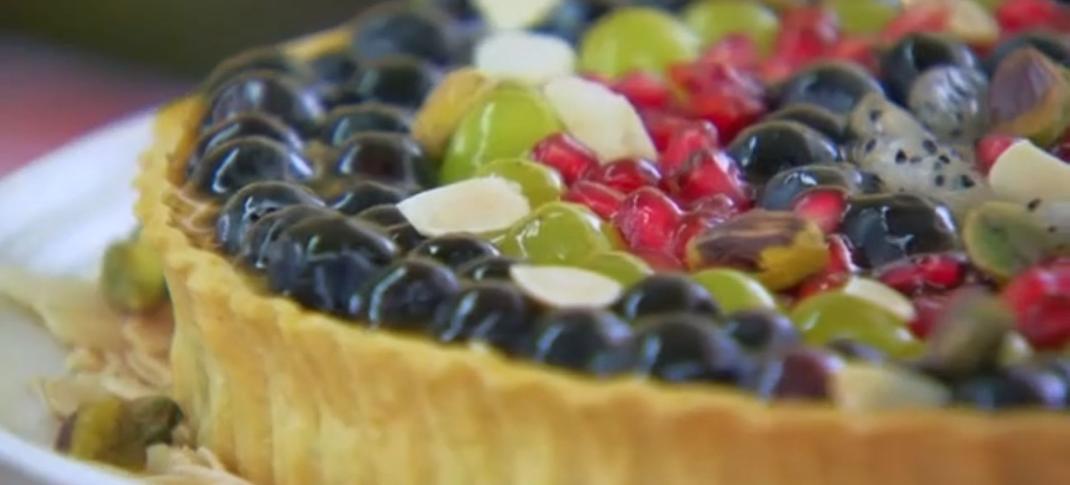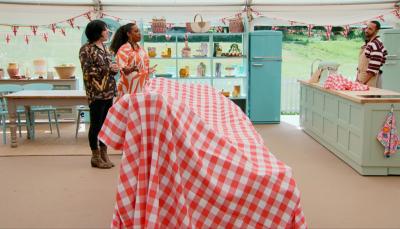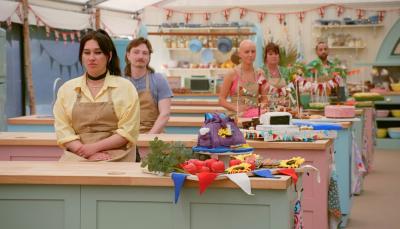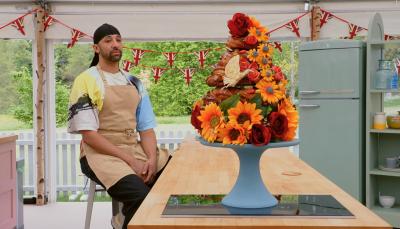Know Your GBBS History: Tart Week

Our new series runs down the truth behind the popular bakes featured on The Great British Baking Show. This week: Tarts!
Tart Week
Tarte Tatin
Interestingly, there seems to be a bit of a theme in this earlier season of The Great British Baking Show. Last week's double feature premiere began with Cake Week, and the cake on the list for the signature challenge was an Upside Down Cake. This week, Tart Week begins with the Tarte Tatin, which is basically the same thing, but the tart edition. Originating in France, this dessert, which is named for the Hôtel Tatin in Lamotte-Beuvron that first served it, is traditionally made with apples, so think of it as an Apple Upside Down Tart.
According to legend, the tart was invented by the unmarried French sisters who ran the hotel in the 1880s, so in France, the actual name of the tart is "Tarte des Demoiselles Tatin" (the tart of two unmarried women named Tatin.) It actually didn't become famous until a Parisian restaurant called Maxim's put it on the menu. Nowadays, though the apple tart is still the version served in France (with tons of caramel to hold it together). The tarte Tatin can be made with any fruit, but to be strictly traditional, it must be served warm with cream on the side.
Treacle Tart
One of the most traditional British desserts served so far this season, the Treacle Tart is nowadays a misnomer. There's not a drop of treacle in it. Instead, modern recipes call for golden syrup, which we in America would think of as an inverted sugar syrup (referred to sometimes as "light treacle.") The treacle tart wasn't always made with the stuff though, as the earliest recipes for it stretch back to the 1870s, and Golden Syrup wasn't discovered until the mid 1880s.
The original tart was made with treacle, black treacle to be specific, which is like a less-bitter version of pure molasses. Black Treacle was actually used for medicine in the 1700s, long before people gave up trying to pretend sugar was good for you. The golden syrup version, which is lighter and sweeter, became popular by the 1900s, and that's the version Harry Potter eats at Hogwarts. So as far as everyone should be concerned, it's the most correct version to be had.
Designer Fruit Tart
The fruit tart evolved from the fruit pie. Pies first came into common baking circulation around the 1350s in Europe. The shortcrust, which is the basis for all tarts and one of the things that majorly differentiates it from pies, was invented somewhere in the 1550s. They became hugely popular in medieval courts during this time period, because the open-faced nature of the dessert made them brightly colored works of art to bring to the table and shared among the guests.
Tarts over the centuries have split into two categories: Savory (quiches and the like) and Sweet (like the fruit tart). The French are still considered the master of the tart, both sweet and savory, with many traditional recipes stemming from the country, from the quiche to the onion tart, to the "French Apple" tart to the Tarte Tatin. Citrus tarts are still considered the most classic European versions, but as our culinary palettes have been opened to encompass fruits of all stripes and cultures, they can really be filled with anything. Even, as we saw in this week's episode, chocolate or macaroons.
Next on GBBS: Desserts Week!




